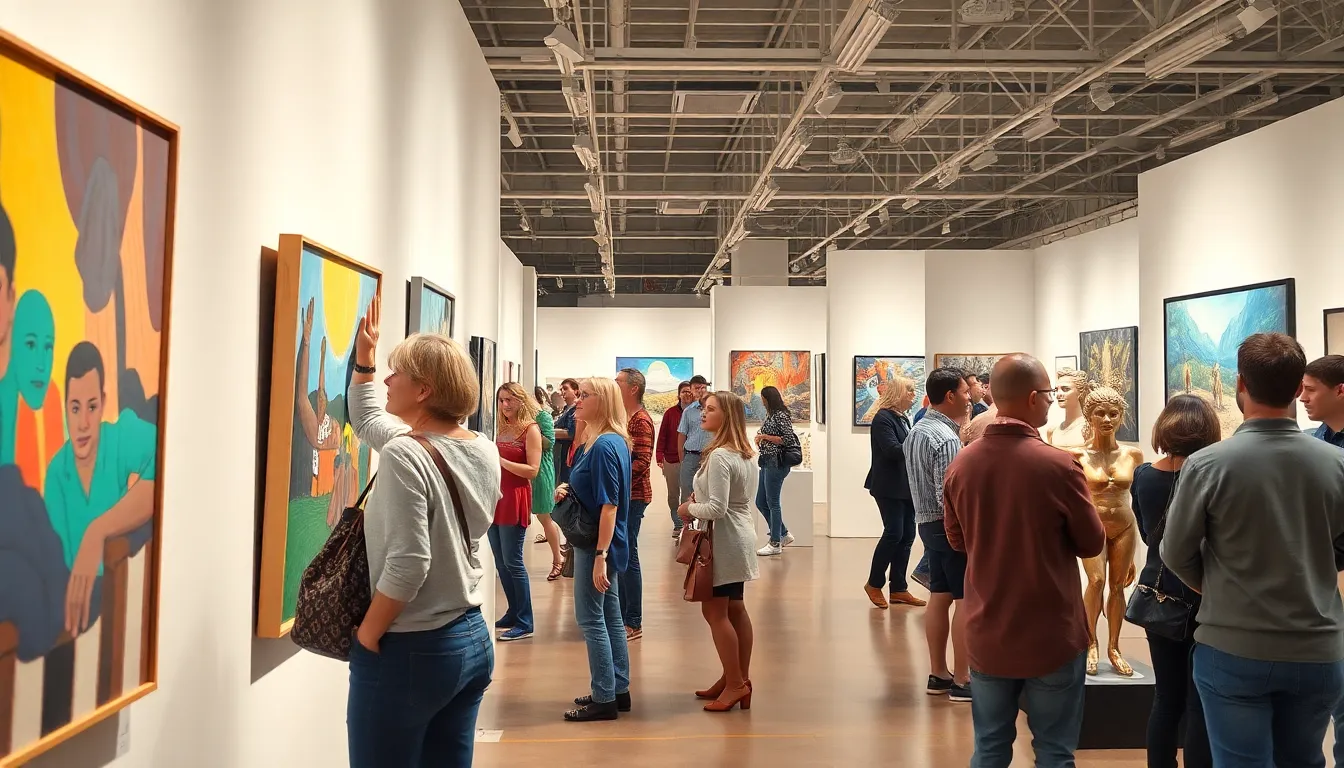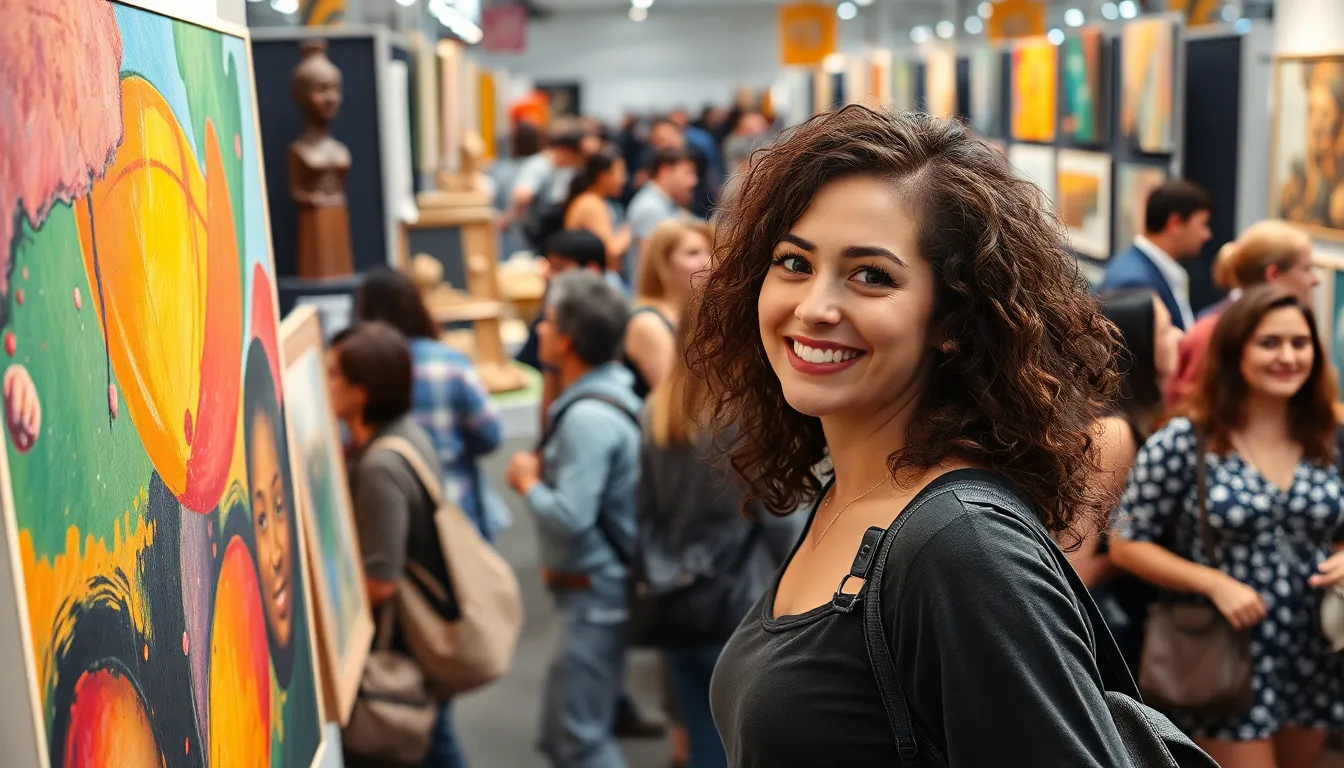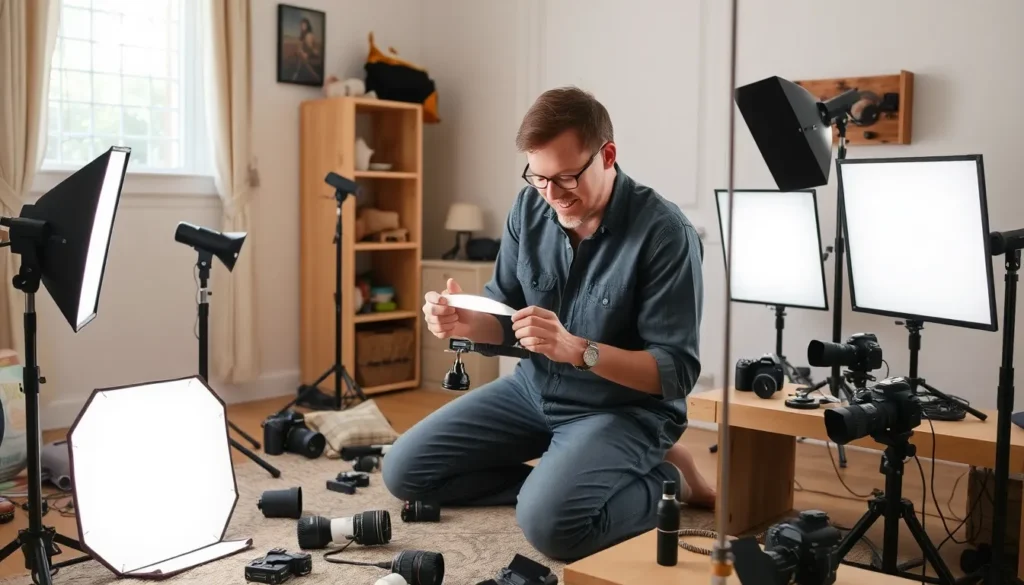Art events serve as vibrant platforms where creativity and culture collide, offering something for everyone. From gallery openings to street festivals, these events showcase the diverse talents of artists while inviting audiences to engage with their work. They create a unique atmosphere that fosters connection, inspiration, and conversation among attendees.
In recent years, art events have evolved beyond traditional boundaries, incorporating technology and interactive experiences. This evolution not only attracts seasoned art lovers but also draws in newcomers eager to explore the world of creativity. As communities come together to celebrate artistic expression, these gatherings play a crucial role in promoting local talent and enhancing cultural appreciation.
Table of Contents
ToggleOverview of Art Events
Art events serve as vibrant platforms where artists present their work and audiences engage with creativity. These events encompass various formats, including gallery openings, art fairs, and community festivals. Each type showcases unique artistic expressions, enhancing cultural dialogue.
Art fairs, for example, feature multiple galleries presenting diverse artist portfolios, attracting collectors and enthusiasts. Gallery openings often focus on individual artists, offering a deeper look at their work and creative process. Community festivals emphasize local talent, encouraging participation and collaboration among residents.
The integration of technology transforms art events, creating immersive experiences. Virtual reality installations and digital art displays cater to tech-savvy audiences, inviting them to explore new dimensions of creativity. Interactive workshops further engage attendees, allowing them to create alongside artists.
Art events also promote cultural exchange. By bringing together artists and audiences from varied backgrounds, these gatherings foster understanding and appreciation of different artistic perspectives. They play a crucial role in sustaining local arts scenes, often generating economic benefits for communities through increased tourism and sales.
Art events provide essential opportunities for artistic expression and cultural engagement. They highlight the evolution of art in society while bridging gaps between artists and audiences, enriching the cultural landscape.
Types of Art Events

Art events encompass a variety of forms, each showcasing unique creative expressions and fostering engagement within communities. Below are some prominent types of art events.
Visual Arts Exhibitions
Visual arts exhibitions illustrate diverse artistic practices through various mediums such as painting, sculpture, and photography. Many exhibitions take place in galleries and museums, providing a platform for both emerging and established artists to display their work. Notable examples include solo shows highlighting an artist’s career and thematic group exhibitions that explore specific concepts or movements. These exhibitions not only enhance public appreciation for visual arts but also invite discussions on contemporary issues related to art and society.
Performing Arts Festivals
Performing arts festivals celebrate live performances across disciplines, including theater, dance, and music. These events create a vibrant atmosphere, often featuring local, national, and international artists. Festivals like the Edinburgh Festival Fringe or the American Dance Festival draw large audiences, fostering a sense of community and cultural exchange. Performances often emphasize collaboration between artists, leading to innovative works that push creative boundaries, while also providing opportunities for emerging talent to gain exposure on larger stages.
Major Art Events Around the World
Art events draw international attention, highlighting innovation and cultural exchange across the globe. Major gatherings, such as Art Basel and the Venice Biennale, exemplify the impact of such events on the art world.
Art Basel
Art Basel stands as one of the premier art fairs globally, held annually in cities like Basel, Miami Beach, and Hong Kong. Each venue attracts top galleries from around the world, showcasing contemporary and modern artworks. Art Basel features over 250 leading galleries, presenting works from established and emerging artists. The event emphasizes not just sales but also cultural dialogue, hosting panels, talks, and performances that engage visitors beyond traditional viewing. This fair connects collectors, curators, and enthusiasts, fostering an environment that encourages the exploration of new artistic ideas and trends.
Venice Biennale
The Venice Biennale, established in 1895, represents a pivotal event in the contemporary art calendar. This biennial exhibition showcases international artists, with participating nations often presenting national pavilions. The event includes various exhibitions ranging from visual arts to performance, accentuating global artistic trends. Venice Biennale attracts hundreds of thousands of visitors, providing a platform for innovative art and promoting cultural exchange. Each edition introduces new themes and concepts, reflecting current societal issues while celebrating creative expression from diverse cultures. This event amplifies the visibility of contemporary artists, enhancing their careers and contributing to global art discourse.
Local Art Events and Community Engagement
Local art events serve as vital platforms for fostering community engagement and enhancing cultural connections. These gatherings not only showcase artistic talents but also invite participation from residents, creating a sense of belonging and shared experience.
Types of Local Art Events
- Art Fairs: Local art fairs feature various artists and galleries, presenting a mix of contemporary and traditional works. These events draw attention to regional creativity and often include workshops or panels that encourage public dialogue.
- Gallery Openings: These events spotlight individual artists, allowing attendees to experience their processes and concepts in-depth. Gallery openings typically feature artist talks, promoting direct interaction between creators and audiences.
- Community Festivals: Community festivals emphasize local talent and often highlight collaborations among artists, musicians, and local businesses. These gatherings create vibrant atmospheres where creativity thrives, encouraging participation from diverse groups.
Engagement Strategies
Organizations implement several strategies to enhance engagement at local art events:
- Interactive Exhibits: Engaging exhibits that encourage hands-on participation help bridge the gap between artists and the community. Attendees can explore art through immersive installations and workshops, promoting active involvement.
- Educational Programs: Educational initiatives, such as artist-led workshops and panel discussions, deepen participants’ understanding of different artistic practices. These programs focus on artistic techniques and contemporary themes, fostering appreciation for the arts.
- Social Media Campaigns: Utilizing social media to promote events engages a broader audience. Artists and organizers can reach potential attendees with visuals, behind-the-scenes content, and real-time updates from events.
Economic Impact
Local art events contribute significantly to the economy by attracting visitors and generating sales for local artists and businesses. Increased foot traffic at galleries, shops, and restaurants during such events leads to heightened business activity. Furthermore, art events often encourage tourism, as visitors seek new cultural experiences.
Through collaboration, creativity, and community spirit, local art events play a crucial role in enriching the cultural landscape. They foster connections between artists and audiences, ensuring the ongoing vibrancy of local arts and culture.
Future Trends in Art Events
Art events continue to evolve, reflecting societal shifts and technological advancements. Several future trends are emerging that promise to reshape these gatherings.
- Increased Digital Integration
Art events incorporate more digital elements, such as live streaming and virtual exhibitions. Artists can reach global audiences simultaneously, expanding their visibility and engagement.
- Augmented Reality Experiences
Augmented reality enhances visitor interactions with artwork. Attendees use their devices to access additional content, enriching their understanding of the art and its context.
- Hybrid Formats
Hybrid events combine physical and virtual components, providing flexibility for diverse audiences. These formats allow in-person attendees to engage deeply while offering remote participants innovative experiences.
- Sustainable Practices
Sustainability gains importance in event planning. Organizers prioritize eco-friendly materials, waste reduction, and sustainable transport options, aligning with global environmental goals.
- Diversity and Inclusion Initiatives
Emphasizing representation, art events increasingly feature diverse artists and perspectives. This trend fosters richer cultural dialogue and community engagement, promoting underrepresented voices.
- Interactive Art Installations
Interactive experiences invite audience participation, creating memorable encounters with art. These installations blur the line between creator and observer, encouraging active engagement.
- Focus on Mental Health and Well-Being
Art events integrate themes of mental health and wellness, offering workshops and programs that focus on healing through creativity. This approach promotes community well-being and engages audiences on a personal level.
- Data Analytics Utilization
Organizers use data analytics to understand audience preferences better. Insights into attendance, engagement levels, and feedback help tailor future events for increased impact and success.
- Cross-Disciplinary Collaborations
Collaborations between artists from various fields, such as visual arts, music, and technology, create innovative experiences. These interdisciplinary events attract broader audiences and stimulate creative conversations.
Future art events will likely reflect these trends, enhancing both the attendee experience and the impact on communities. Art continues to adapt, shaping culture and society in dynamic ways.
Art events serve as vital platforms for creativity and cultural exchange. They not only showcase diverse artistic expressions but also foster community connections and engagement. As these events evolve with technology and innovative practices, they continue to attract a wide range of audiences.
Local and global art gatherings play a crucial role in enhancing the cultural landscape and stimulating economic growth. They invite participation and dialogue, enriching the experiences of both artists and attendees.
With a focus on sustainability and inclusivity, the future of art events looks promising. As they adapt to new trends and audience preferences, these gatherings will undoubtedly remain essential in promoting artistic expression and community spirit.



